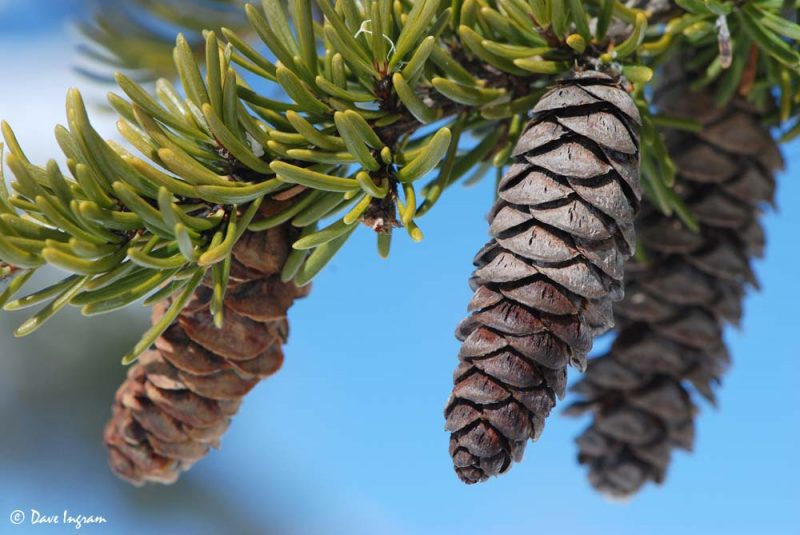Guest Post By Jocie Brooks
Western Hemlock
Western Hemlock (Tsuga heterophylla) is one of coastal BC’s most common conifers. It is also a very beautiful tree, with fine needles and attractive downward-sweeping boughs. Early settlers called the tree “hemlock” because they thought that the odour of the crushed needles resembled a European plant. “Tsuga” translates from Japanese as “tree mother,”and “heterophylla” means needles of variable length.

Like other coastal conifers, Western Hemlock is a large tree, growing up to 60 metres in height and two metres in diameter. It has a narrow crown and a distinctive, drooping tip. The branches have a feathery appearance due to the small delicate needles, which are much shorter than other conifers. Looking closely you will notice that the needles are unequal lengths, some being very short and others longer, varying from 5-20 mm. Flat and blunt-tipped, the shiny yellow-green needles have two fine lines of white stomata on the underside.
The bark is smooth and reddish-brown when young, but turns a darker brown with age and develops furrows and scaly ridges. It is never as deeply grooved as Douglas-fir bark. The oval-shaped seed cones are golden-brown and abundant. They are, however, only a few centimetres long and easily overlooked. The wood is whitish to tan-coloured and is strong, light, and easy to carve. Economically, hemlock is considered an important tree in BC.
Western Hemlock is found on wet or fairly dry sites, and seedlings often get a start by growing from decaying wood and other organic matter. Being a slower growing, more shade-tolerant species, western hemlock often succeeds the faster growing, light loving Douglas-fir. Hemlocks can live for 500 or more years.
Western Hemlock is found in coastal BC and the interior “wet belt” of eastern BC. It occurs at elevations up to around 1000 metres.
Mountain Hemlock
Above 1000 metres, Mountain Hemlock (Tsuga mertensiana) becomes more common. Mountain Hemlock is well adapted to subalpine conditions and can tolerate a snow pack as deep as six metres.

Mountain Hemlock looks quite similar to Western Hemlock, but there are key differences. It rarely exceeds 40 metres in height and may be stunted or almost bonsai-like if it is growing in exposed places or in bogs. The needles are blue-green and are arranged around the stems in a bottle-brush like fashion (not flattened). Unlike western hemlock, the lengths of the needles are equal. The branches sweep upwards at the tips, and for this reason it doesn’t provide much protection for those seeking shelter from rain. The purplish-brown cones of mountain hemlock are long and cylindrical and are more than double the length of western hemlock cones. Mountain hemlock is named after German botanist Franz Carl Mertens (1764-1831).
Useful Trees
First Nations peoples used hemlock for a wide range of purposes. In the late spring, the inner bark was harvested and eaten fresh or dried and eaten with highbush cranberries and oulachen grease. Hunters and travelers would nibble the tips of the branches as a hunger suppressant. During the herring spawn, hemlock branches were placed into the ocean to catch herring eggs, which were a favourite food. The bark was boiled and used for dyeing and tanning. Various parts of the hemlock tree were also commonly used for a variety of medicinal purposes.
Hemlock is a beautiful tree that can be easily recognized with a bit of practice. Though hemlocks look like they would make great Christmas trees, they tend to shed their needles readily after being brought indoors, so Douglas-fir or grand fir is a better choice. But a hemlock in-situ, with its boughs dusted with snow, is one of the prettiest Christmas trees of all!
This post was revised and published in the Winter 2012 issue of Menziesia, the newsletter of the Native Plant Society of British Columbia.